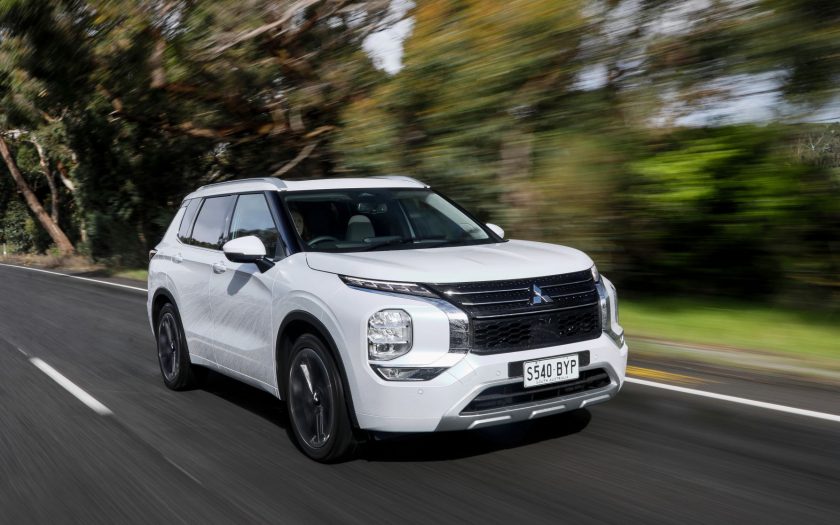Chris Riley tests the 2022 Mitsubishi Outlander Exceed with pricing, specs, ride and handling, safety, verdict and everything the over-50 driver needs to know.
Summary: Like the looks, less thrilled about the performance and the way it drives.
2022 Mitsubishi Outlander Exceed
Pricing: $47,990 (plus on road costs).
Warranty: Ten-years, 200,000km (if serviced at an authorised Mitsubishi dealer), otherwise Five-years, 100,000km. 10 years capped price servicing. Four-years roadside assistance.
Safety: 5-star ANCAP
Engine: 2.5-litre four-cylinder petrol
Power: 135kW at 6000rpm
Torque: 245Nm at 3600rpm
Transmission: CVT 8-step automatic, all wheel drive
Body: 4710mm (long); 1862mm (wide); 1745mm (high)
Weight: 1760kg
Towing capacity: 1600kg
Wheels: 20-inch alloy
Tyres: 255/45R20
Ground clearance: 210mm
Turning circle: 10.6m
Fuel tank capacity: 55 litres
Official consumption: 8.1L/100km (91 RON fuel)
Consumption on test: 8.2L/100 (400km)
seniordriver consumption on test: 7.7L/100km (397km)
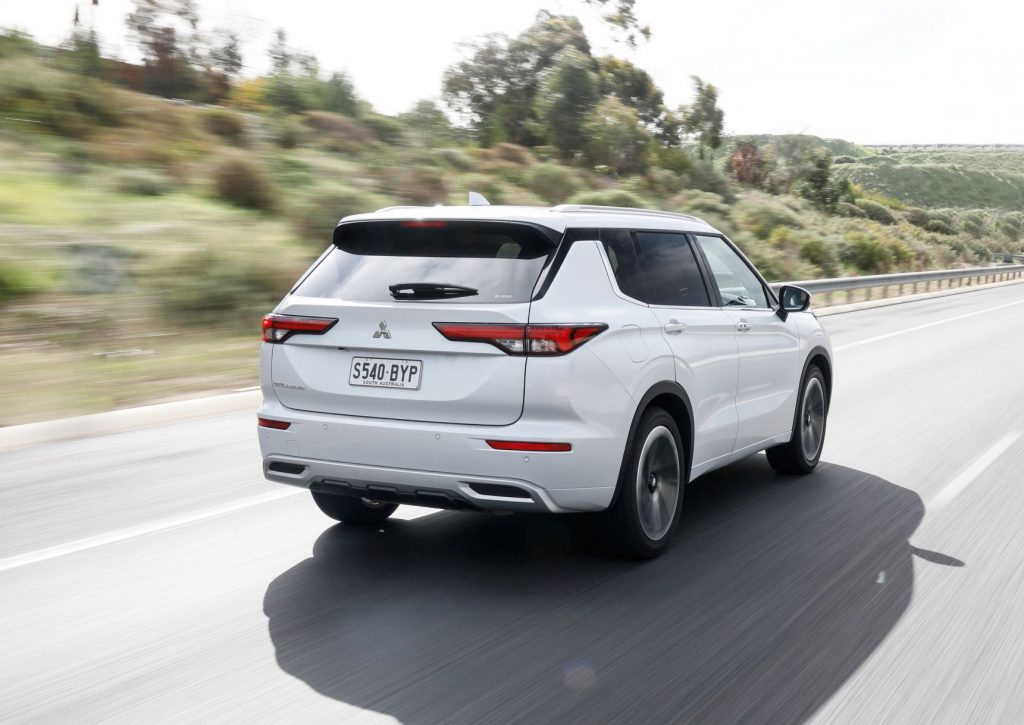
[review]
Mitsubishi’s Outlander is back, bigger and boofier than ever – but all is not quite as it seems.
The latest Outlander hides a Nissan X-Trail, the first time the Japanese brand has released a badge-engineered car.
By the same token, it has just as much in common with the Renault Koleos, which also shares the same platform.
It’s all a reflection of the fact that Mitsubishi is part of the Nissan-Renault-Mitsubishi Alliance and has been for a long time, although it rarely gets a mention.
Outlander is priced from $34,490 plus on-roads (ES 5-seater 2WD – Ed).
LS and above models get three rows of seating as standard.
Our test vehicle the Exceed (second from top) is priced from $47,990 plus on-roads.
The last time we drove this model it had a $42,990 price tag.
For two grand more, Exceed Touring adds two-tone paint and interior trim, along with massage for driver and front passenger seats.
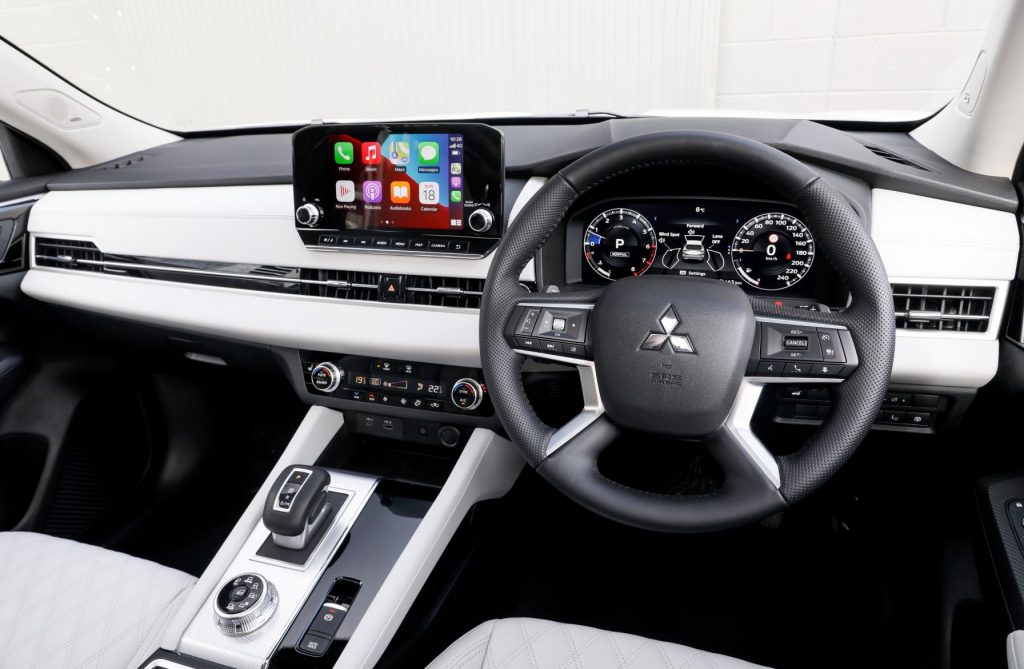
The Japanese love a good acronym, especially when it comes to describing the technical features of cars.
Although it’s no acronym, you might be interested to learn Outlander was penned under the design language “I-Fu-Do-Do”.
Don’t laugh. It may be lost in translation, but means “authentic and majestic” in Japanese, and shows in the Outlander’s bold proportions, muscular fenders and the chiselled lines of the “Dynamic Shield” radiator grille.
Whatever, it looks pretty damn good, probably the best iteration yet of what we’ve come to think of as the ‘Decepticon’ look.
Until recently, even top of the line Mitsubishis sometimes missed out on satellite navigation.
Drivers were forced instead to rely on their mobile phones if they needed to find their way somewhere.
But there appears to have been a change of thinking at Mitsubishi HQ, because all models now come with sat nav as standard.
Wireless Apple CarPlay is also now standard, while Android Auto still requires a cable connection.
Wireless smartphone charging is also fitted to LS models and above.
A stylish, responsive 9.0-inch touchscreen is standard across the range.
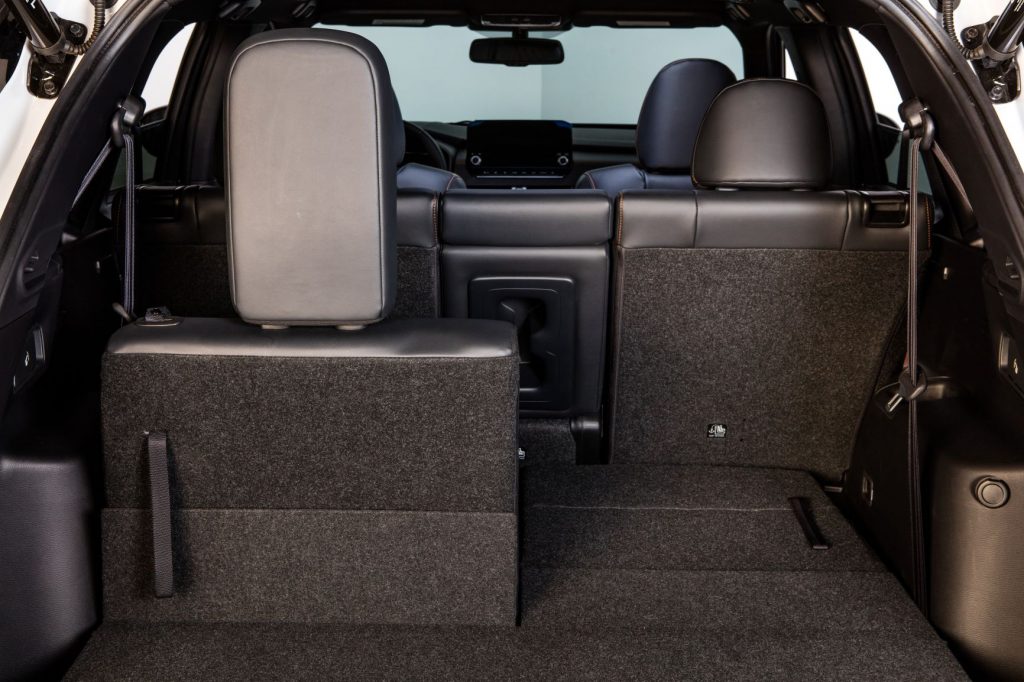
Standard kit includes dual zone climate control with rear air vents, front and rear parking sensors and traffic sign recognition – as in speed limit warnings.
Outlander ES and LS models also have 7.0-inch colour multi-information display as part of the instrument cluster.
Aspire and above, however, gets a 12.3-inch full colour digital instrument cluster.
By the time you get to Exceed, there’s leather, three-zone climate, 20-inch alloys, heated and cooled seats, 360 degree reversing camera, a panoramic sunroof and 10-speaker Bose audio.
Additionally, a 10.8-inch full-colour head-up display is fitted to Aspire and above models.
Depending on trim level, safety includes Forward Collision Mitigation (FCM) with MMC first application of cyclist detection and junction assist, Blind Spot Assist (BSA), Blind Spot Warning (BSW), Lane Change Assist (LCA), Lane Departure Warning (LDW), Adaptive Cruise Control (ACC), Rear Cross Traffic Alert (RCTA), Automatic High Beam (AHB), and a Multi Around Monitor camera system with moving object detection.
Replacing the previous 2.0 and 2.4-litre petrol and 2.2-litre diesel engines, is a one-size-fits-all Nissan 2.5-litre, four-cylinder, naturally aspirated petrol engine that generates 135kW of power and 245Nm of torque.
It’s paired with a continuously variable transmission (CVT), with paddle shifts and Sport mode that provides access to eight pretend gears.
The change lever itself feels more like a joystick, with a button for park.
Two-wheel drive models get five drive modes, all-wheel drives get six.
Power output is more than the 2.4 it replaces, but still somewhat average in the context of today’s sophisticated hybrid and turbocharged setups.
But performance is adequate providing you don’t have high expectations.
In fact, it’s about as middle of the road as it gets, not surprising considering the car’s target market.
Straddling the medium to large segments in terms of size, the previous model attracted young and growing families on a limited budget.
They were chasing size and price, and the Outlander nailed it.
The new Outlander is a better looker, feels more upmarket and will have similar appeal.
But with prices starting from $5000 more, it has lost some of its gloss.
It could see buyers start to look elsewhere, because to these people $5000 is an awful lot of money.
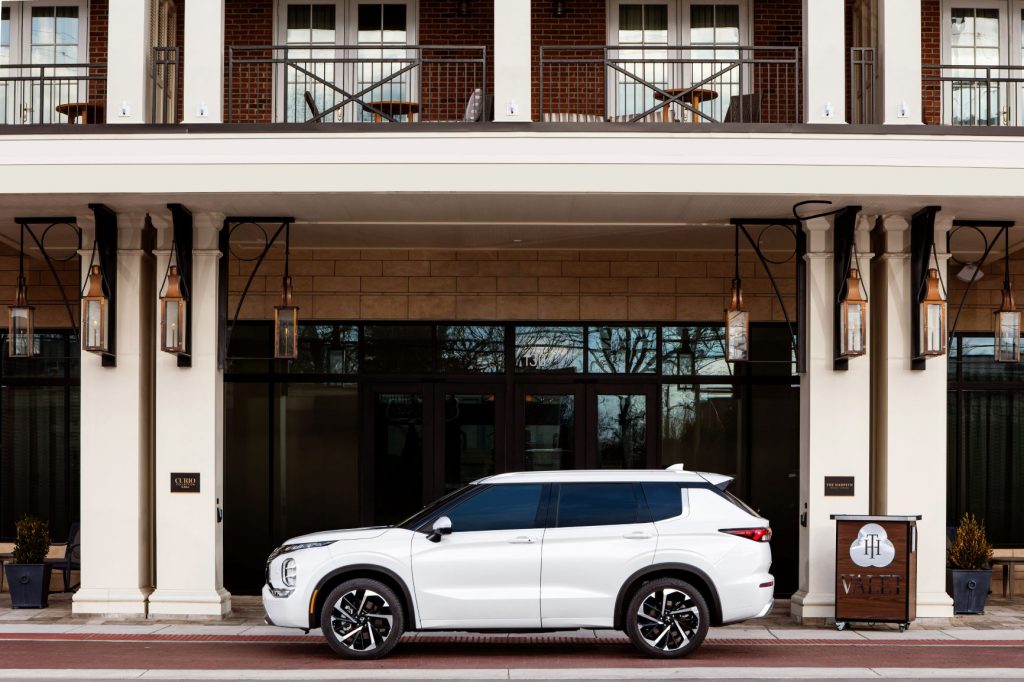
Drive-by-wire transmission combined with new CVT control logic is designed to deliver a feel more like a traditional auto and to some extent it does.
It’s generally more responsive and better behaved than we remember, but still has a tendency to become “zoomy” under load.
It’s hard to describe, but you’ll know exactly what I mean when it happens.
Steering is light and responsive, and the ride is very good considering the large 20-inch wheels and low-profile rubber.
The re-engineered all-wheel drive system includes enhanced Active Yaw Control, now including rear wheel brake control for independent control of all four wheels, and the evolution of 4WD control with a new hydraulically activated direct coupling device for faster all-wheel response.
Impressive, but what we don’t like is the twitchiness that marks the system.
It never really settles down, as the system continues to make tiny but frequent adjustments to maintain optimum traction – and needs to be dialled back.
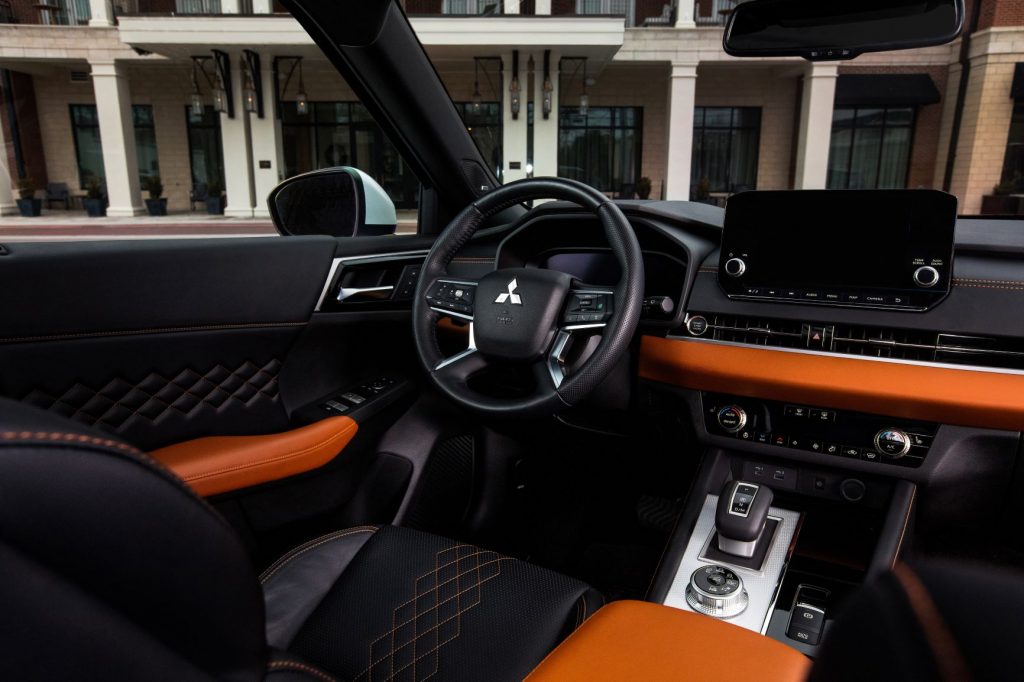
The cabin has an upmarket look and feel, with its quilted leather seat trim, piano black console surround and quilting on the doors too.
The car is slightly longer than its predecessor, but more importantly wider and taller with a 36mm longer wheelbase that translates to more interior space – especially more rear legroom.
But the third row is still extremely cramped and suitable only for small children (how many times have I written those words).
At the same time, the second row slides forward to provide more room.
The tall, skinny, third row headrests look like Easter Island statues, but fortunately can be stowed under floor when not required.
Second-row passengers also get their own air outlets as well as sunblinds for the side windows.
There’s plenty of eye candy too, with a digital instrument cluster and attractively styled free-standing touchscreen that’s super responsive to the touch.
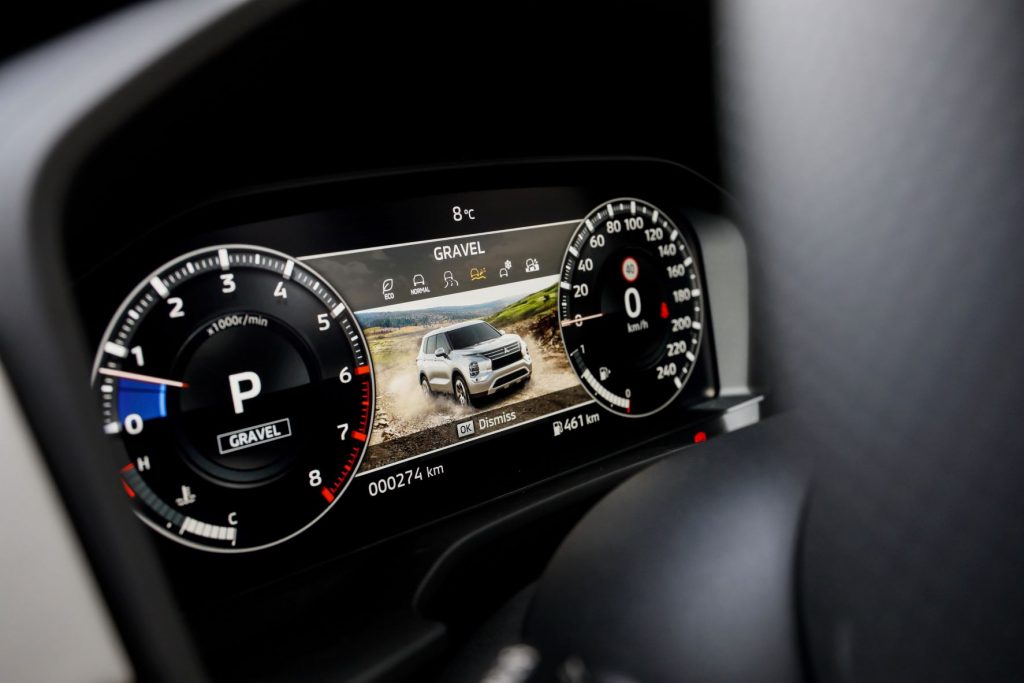
But the instrument panel looks a little busy.
It’s not apparent from the photos, but that’s the way it feels.
With a 55-litre tank, it is rated at 8.1L/100km and takes standard 91 unleaded.
The trip computer was showing 8.2L after just over 400km (the old one was good for 7.2L/100km).
Standard warranty is five years or 100,000km, but if you get your vehicle serviced with Mitsubishi it’s an impressive 10 years or 200,000km.
What we like
- Styling
- Quilted leather
- Responsive touchscreen
- Gets sat nav
What we don’t like
- Third row headrests
- Cluttered digital instrument cluster
- No curtain airbags for third row passengers
- Twitchy all-wheel drive system
- No diesel or hybrid option
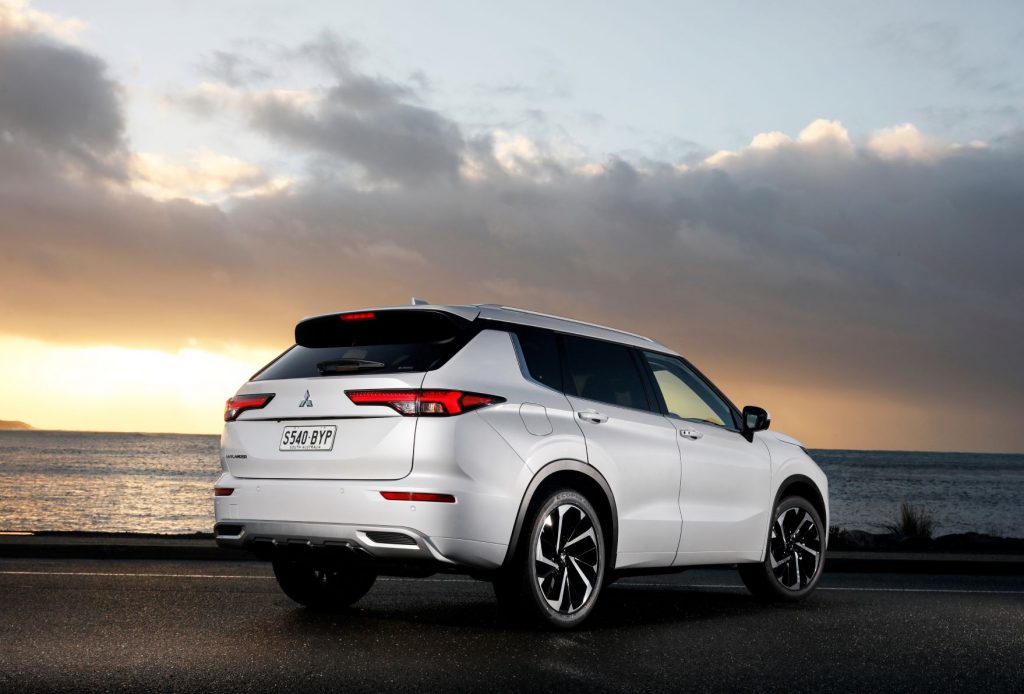
What over-50s need to know
After the X-Trail acquired a CVT-style, continuously variable transmission, I never really warmed to the car, although I’ve driven X-Trail on many occasions.
That’s not to take away from the job Mitsubishi has done with the platform and drivetrain, it’s just that if I’d wanted a Nissan – I would have bought a Nissan.
At the same time, if you’re in the market for an inoffensive, featured-packed, one-size-fits-all SUV, then Outlander could be just the thing.
It looks terrific and at $47K the price tag is retirement friendly, along with the 10-year warranty, provided of course you get it serviced with Mitsubishi.
The CVT, for all its faults, is a guarantee of good fuel consumption and is reasonably well behaved, provided you don’t put the boot in (you wouldn’t, would you?).
The seats are comfy too, as well as being heated and cooled and it’s easy to get in and out of – what more could you want?
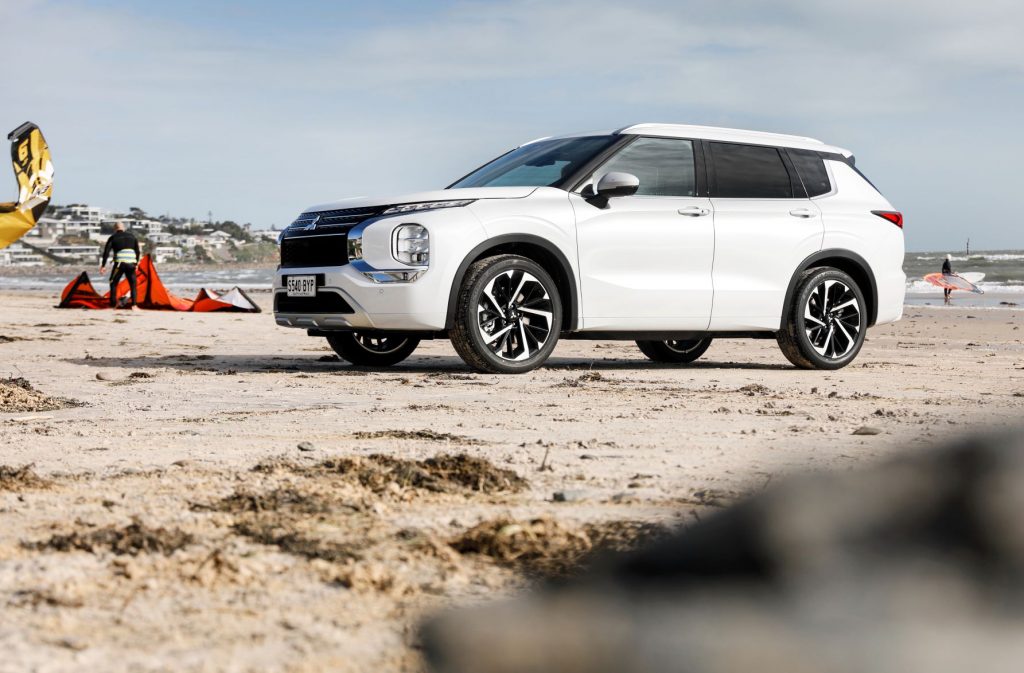
seniordriver comments
Unlike Chris, we drove the Aspire model, third top of the range.
Mitsubishi’s Outlander has always walked the fine line between offering all the latest features and still coming in at a value-for-money price. It’s a philosophy that has seen the Outlander a consistently strong seller.
The new model is a giant step forward.
In size, it sits somewhere between medium and large SUVs (Mitsubishi rather coyly describes it as a “5+2-seater”). That third row really is tight, and we were disappointed that the curtain airbags don’t extend to it. And as for those tombstone rear headrests – what were they thinking? We immediately removed them and stowed them elsewhere, to the immediate benefit of rearwards vision.
We are most impressed with the confidence Mitsubishi has shown to introduce a market-leading 10-year/200,000km warranty, even if it comes with the proviso that you have the vehicle serviced by an authorised Mitsubishi dealer (otherwise it reverts to five years and 100,000km).
Value for money is, as always, in the eye of the beholder, but with its extra equipment, size and on-road presence, we think the Mitsubishi Outlander still makes a strong case for itself. But if you’re thinking of using it for towing, we’d point out the slightly limited 1600kg braked towing capacity.
